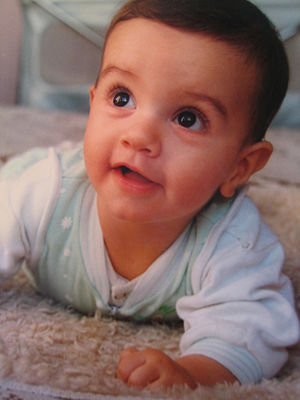 Image via Wikipedia
Image via Wikipedia
- recognize the approximate difference between two numbers
- keep precise track of small numbers, and
- do simple subtraction and addition problems.
Moreover, when babies perform these feats they activate the same parts of the brain that are associated with mathematical thinking in adults.
What babies know about numerosity
Psychologists define “numerosity” as the number of things in a set.Although we can get a precise measure of numerosity by counting, it’s possible to appreciate numerosity in a more approximate way.
For instance, if I ask you to glance in a crowded elevator and estimate how many people are there, you can probably make a pretty good guess.
Glance inside two elevators, and you’ll also be pretty good at guessing which one has more people in it.
All without counting.
It turns out that adult humans aren’t the only creatures who can pull this off. A variety of non-verbal creatures—including monkeys, rats, and human infants—can detect the approximate difference in magnitude between two sets (Dehaene 1999).
Show them two displays—one featuring 8 items and the other only 4 items—and they will respond differently depending on what they see.
And the difference is observable in the brain.
When 3-month old infants were shown a series of displays depicting different quantities of objects, the electrical activity of their brains changed in response (Izard et al 2008).
For example, babies were presented with a continuous stream of images, each depicting 4 objects. From image to image, the objects were arranged differently. But the total number of objects remained the same.
Infants subjected to this program showed signs of boredom.
But their brain activity (as measured by event-related potentials, or ERPs) would perk up if they were next presented with an image showing 8 objects.
What’s more, the part of the brain that was activated was the same region that lights up when adults process information about numbers (Izard et al 2008).







No comments:
Post a Comment